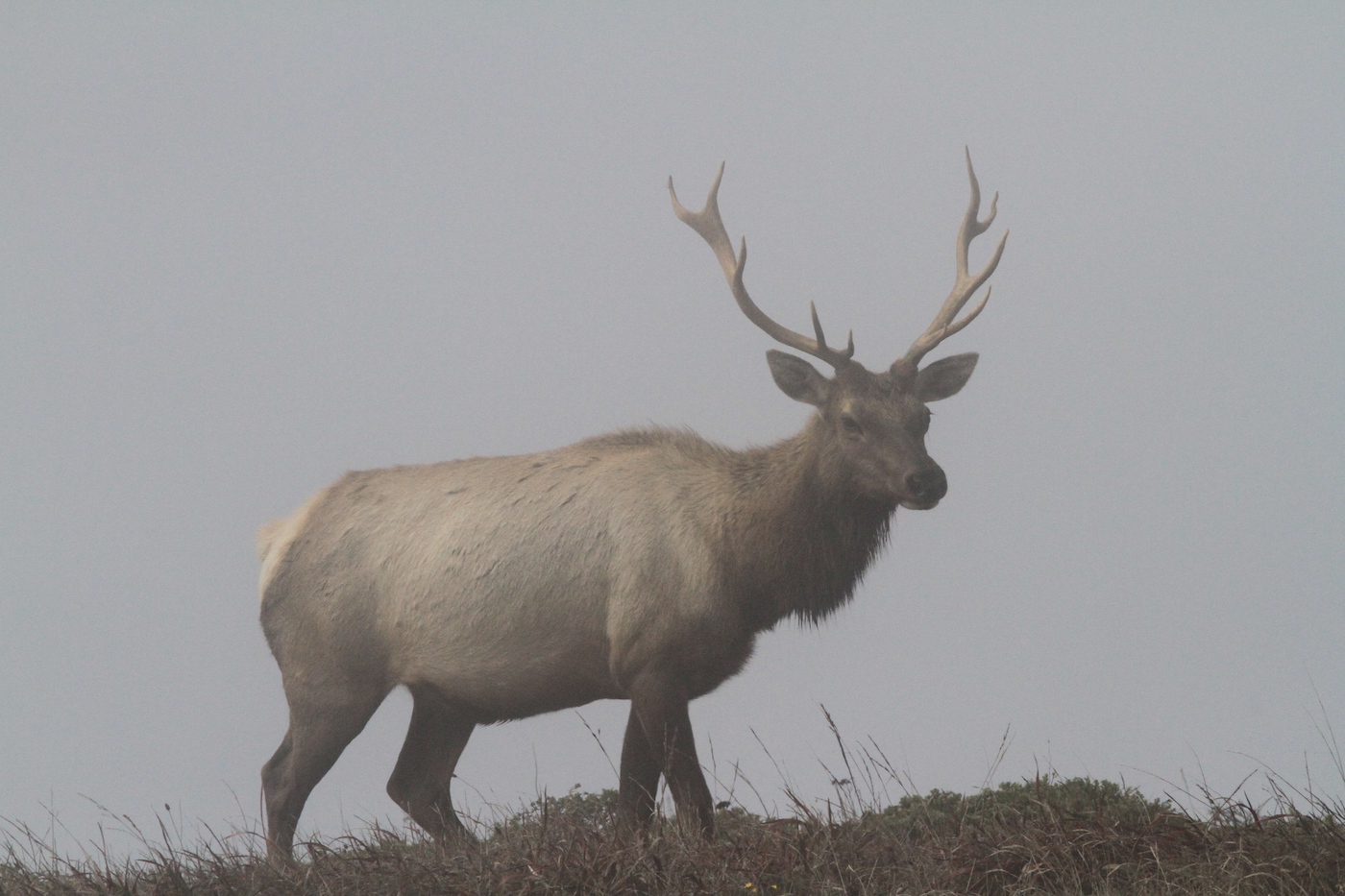Bugle Call

The pea soup fog hung over Tomales Point at Point Reyes National Seashore like a wet, cold blanket in Northern California. We could hear the surf thundering below, but Holly Lohuis and I couldn’t determine how big the waves were, the fog concealing just about everything except the narrow, rolling route out to the wave-battered point.
The dewy overcast also hid from view the serenity of Tomales Bay, lonely Hog Island and the serpentine-like Pacific Coast Highway. Up close however, we followed the nine-mile out-and-back, round-trip hike across a craggy, rolling spine, guesstimating we had about 200 feet of visibility on the exposed peninsula.

After we finished our first moderately steep hill some California natives emerged in the ghostly haze. At first, all we could make out were just a few tule elk cows browsing off a dewy, grassy hillside. To get a better vantage point, we crept over to a cluster of rocks, our eyes constantly adjusting to the wisps of shifting fog. Eventually we discovered many more ungulates still bedded down following what appeared to be a quiet, restful night along the northern reaches of coastal California.
The Tule Elk State Natural Reserve lies within the Point Reyes National Seashore and protects this species that once numbered well into the hundreds of thousands. Local cattleman Henry Miller witnessed their dramatic decline, and in 1874 began protecting them. The herd on Tomales Point has had permanent protection since 1932, so much so that elk from the reserve have been transplanted to other regions of the Golden State to replenish small, existing herds or where old habitat was void of any tule elk at all. Today, there are roughly 4,000 tule elk reestablishing old California habitat where they roam and browse rolling foothills and sweeping grasslands.
As the fog continued to shift and swirl around us, the herd of approximately 25 tule elk cows with several calves in tow, gradually began strolling the broad spine of the peninsula. The herd was in no big hurry to be anywhere. They were busy feeding and garnering moisture from the wet grasses. Tule elk are diversified browsers and can eat lots of different vegetation. The herd continuously vanished and then reappeared, the fog so dense, sweeping across the peninsula aided by a cool, light northwest wind.
One of the cows (we suspected the dominant female) repeatedly called out, but at first, we couldn’t determine to what. We initially thought a stray calf. Her series of chirps and even whispers wafted across the peninsula. As the herd slowly crisscrossed the trail in front of us her calls continued to go unanswered. Holly and I kept a safe distance continuing to utilize convenient rock outcroppings for the best views, hiking quickly from one crag to the next.
The seemingly concerned cow called out one more time but on this occasion (and without any recognition) we finally got to see what she was so intent on. A regal, majestic, and dominant tule elk bull slowly sauntered up the ocean side of the bluff, briefly emerging on top of the peninsula that was still cloaked in fog. He brought up the rear, following his herd but never browsing himself. He only seemed intent on his herd, watching over them as they browsed.

It was early August, and the tule elk bulls were in the midst of their annual rut. The dominant males fend off the competition, newcomers attempting to lay claim to an established bull’s hard-fought cows and territory. The bulls in waiting do keep the established bulls on their toes until early fall.
This solitary bull was stealthy, appearing for just a few moments, just enough time for me to fire off a few frames in the diffused light. Mostly he kept his distance, while keeping his cows moving between himself and us as the herd continued their traverse northward. As the bull disappeared, the last thing we saw was his impressive antlers that were tall and broad and still visible just beyond a lichen-covered crag, the horizon vanishing with him as the fog once again swallowed up Tomales Point.





